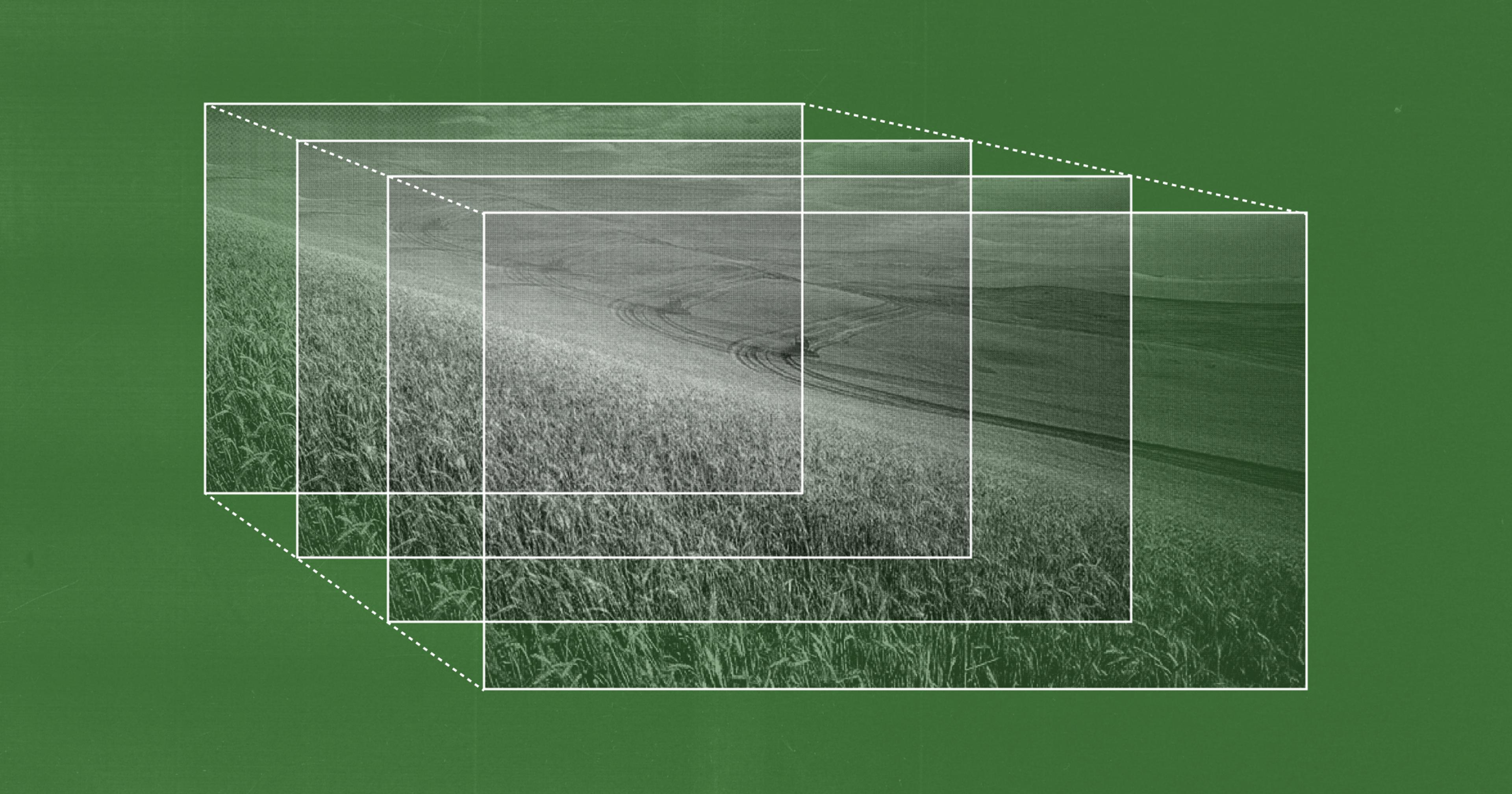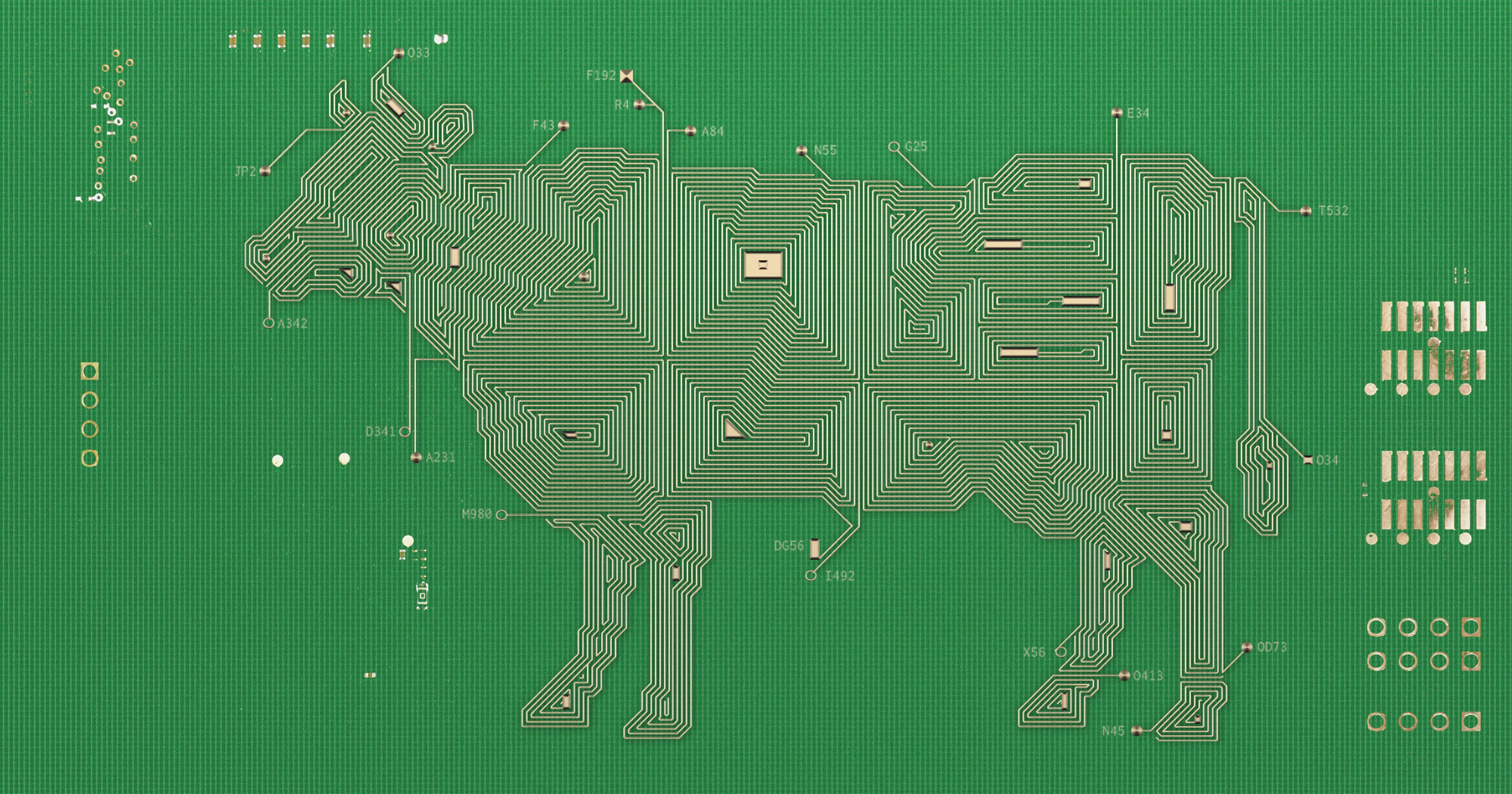The FAA recently approved the use of multiple unmanned aircraft on a single farm, promising to make it easier to manage large fields. But regulators say the technology is weighed down by a lot of unknowns.
Envision a classic pastoral landscape: wide open spaces, cows grazing, bales of hay. In the distance, a structure — likely a rustic red barn. Or is it a giant metal shipping container abuzz with hundreds of aerial drones?
This is the future drone manufacturers want, and one that’s closer to reality now that the Federal Aviation Association (FAA) has approved the agricultural use of “drone swarms,” or up to three unmanned aircraft flown by the same pilot. Swarms will make agriculture ultra-efficient and give farmers back the time and labor involved in managing their fields via tractor, drone proponents argue. The technology, they say, is needed to keep American farmers competitive in the global economy. But some experts wonder if the industry is hurtling too fast toward automation before swarm tech has been thoroughly tested.
Since the 1920s, farmers have been using aircraft to assist in their fieldwork, tackling some of the tasks that are typically done on the ground — with a tractor or on foot — from the air. Drones, first developed as a military technology and sometimes referred to as unmanned aerial systems (UAS), are the most recent addition, surging in popularity among farmers with large fields who primarily use them to survey for crop disease and damage, drop seeds, and spray chemicals and fertilizers.
Andrew Moore, CEO of the National Agricultural Aviation Association (NAAA), said that the aerial agricultural industry currently treats about a third of the nation’s total cropland, over 120 million acres. Of the more than 1,500 businesses in the country represented by the NAAA, Moore estimated that 3% use drones, a share that is increasing year over year. With the unveiling of more sophisticated drone swarm technology, that number will only continue to climb.
So far, however, the new FAA regulation only applies to Hylio drones, a manufacturer in Texas with mostly agricultural and environmental clients. (Hylio also sells products to defense contractors, including the Virginia-based MITRE Corporation, which launched a drone-detection program in the Middle East last summer.) Though technically swarm flying was allowed prior to the regulation, which went into effect earlier this year, each individual craft had to be under 55 pounds to comply with FAA rules. Most agricultural drones carry a payload of material to drop over fields and have a total weight that is “way over” that amount, according to Arthur Erickson, Hylio’s CEO. He estimated Hylio’s heaviest drone — with a full payload, plus the batteries and the frame — would take off at around 420 pounds.
The new regulation also changes the rules about visual observation. Previously, if you had three drones in a field, you’d need both a pilot for the drones and a second person to act as a visual observer. Now, one operator can serve as pilot and visual observer for up to three drones in the above-55 weight class, which allows farmers to cover a lot more ground with less labor.
“It’s about productivity,” Erickson said. “You can spray thousands of acres per day like you could with a big tractor or airplane. These drone swarms can do just as much if not more than traditional farm equipment.”
Even so, regulators and watchdogs still see a lot of question marks. Concerns tend to fall into three main categories: airspace, cybersecurity, and environmental impact.
“Automation is what’s best for the farmers, what’s best for putting food on people’s tables.”
Stephen “Lux” Luxion, executive director of a research wing of the FAA called ASSURE (The Alliance For System Safety Of UAS Through Research Excellence) at the Mississippi State University said that “low-flying airspace can get pretty crowded,” and “there’s whole rules of the road that have to be developed, all kinds of tech that needs to be created” before larger drone swarms are safe.
Meanwhile the NAAA is urging the FAA to enforce right-of-way laws that favor manned aircraft, because, as Moore explained, “it’s difficult for manned aircraft to spot drones, then track them after they’ve spotted them, since they’re focusing on making the application themselves.” The NAAA is also pushing for drones to be built with “detect and avoid technology” that would automatically get them out of the way if another aircraft is detected, Moore said.
Similarly, there are all sorts of novel technical considerations that manufacturers are exploring regarding cybersecurity and surveillance.
Erickson explained that the U.S. government is pushing to ban foreign-made drones because of potential vulnerabilities to data mining and spy devices that could gather intel about crop locations or even U.S. military positions. As with any new, internet-connected technology, there’s anxiety about bad actors hijacking drones for malicious purposes. Brian Bothwell, a director in the science and technology department of the Government Accountability Office, said these are questions that need to be answered now rather than when it’s too late.
“You’re operating a system that’s going to be vulnerable to hacking, no matter how you’re operating,” he said. “Whether it’s wireless, Bluetooth, whatever, over 5G there’s a chance someone could hack that if you don’t have the right security protocols. People want to invent the really cool stuff and then think about how to protect it later, but that’s something that should be built into the development of a communication system like that.”
If an agricultural drone or network of drones is hijacked, it could do serious damage, Luxion warned, especially those carrying chemicals. “Any time you’re messing with chemicals, there’s always concern that those chemicals won’t end up in the right places,” he said.
But even without nefarious activity, a drone’s standard chemical application raises ecological concerns. A major focus among environmental advocates is the potential for unwanted drift that could cause problems for surrounding ecosystems and neighboring farms.
“Drone swarm spraying would be counterproductive to measures put in place by growers to encourage predatory birds, pollinators, etc.”
In an email, Scott Rice, senior director of regulatory affairs at the Organic Trade Association, said pesticide applications via drone could pose a potential increased risk of chemical drift and direct spraying, “which can disrupt biodiversity and, if not conducted properly, harm farmworkers who are not warned or evacuated from the fields prior to spray events.” He added that “drone swarm spraying would be counterproductive to measures put in place by growers to encourage predatory birds, pollinators, etc.”
At this stage in development, there are different answers about the efficacy and precision of drone spraying depending on who’s asked. Manufacturers like Erickson claim drones aren’t the problem. There’s been an industry-wide push to spray smaller, micronized droplets that can be more effectively absorbed by plants. He said smaller droplets are also more susceptible to drift, “regardless of vehicle.” Drones, he argued, are actually better at mitigating that drift than other aerial vehicles because of their “rotor wash,” vortices of air that push the mist down. “Generally speaking it does a much better job of getting that into the crop.”
But Moore of the NAAA wants to see better testing before the technology becomes any more mainstream among farmers.
There are a lot of claims made about drone spray precision, Moore said, but “there’s a lot more data on manned crafts. The drones just haven’t been tested to that degree.”
The Environmental Protection Agency uses atmospheric models to predict how a product drips after it’s applied, he explained, but they haven’t made a version for drones yet. Regulators in Canada, on the other hand, have taken a more “precautionary approach,” and require modeling for a drone and its drift effects before it hits the market. Until we’ve updated our models here in the U.S., he said, “the effect of the applied materials might be different, it might drift more, it might not.” We just don’t know.
But regardless of the testing lag, the drone industry continues to plow ahead, toward the goal of “removing the human as much as possible,” according to Erickson.
“Not in, like, a bad, dystopian way,” he said, “but all the menial tasks of actually going out and doing the crop scouting and analysis is way too time consuming and there’s not enough people in this country who are willing to do it. So [automation] is what’s best for the farmers, what’s best for putting food on people’s tables.”
Still, Erickson estimates the technology needs another five to 10 years of fine-tuning until drones and their swarms achieve full autonomy — when a fleet could potentially rely on AI to communicate with one another and accomplish different tasks. Cue the drone “hive” housed inside a giant shipping container.
This current iteration of AI might mistake a swath of yellow in a field for a weed infestation when it’s really just a lens flare, for example. “Yes, the AI can recognize patterns,” Erickson explained. “But it doesn’t have the intuition yet of a human.” Whether a swarm of drones will ever be able to predict the “randomness of nature,” as he called it, is still up in the air.










